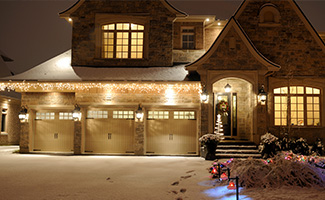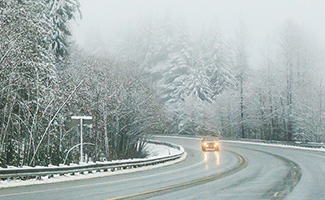Preventing Winter Weather Losses
November 21, 2016
Winter weather losses in the U.S. total over $1 billion annually. While Pacific Northwest winters are mild compared to the East Coast and Midwest, we still need to take precautions for increased risks associated with the winter months.
Your Home
Frozen Pipes: Insulate garages, attics and crawl spaces where pipes are exposed, and insulate the pipes, too. When the deep freeze arrives, keep the house heated to at least 60 degrees. Run faucets at a trickle of both hot and cold water. Open cabinet doors so that heat reaches pipes under sinks.
For vacation homes, keep the heat on, have someone check the house daily, and consider shutting off the water and draining the water system. (How to: turn off the main shutoff valve and turn on every faucet until water stops running. Drain toilets by holding down the lever until the tank empties.)
Consider installation of an automatic leak detection and water shut-off system, which will limit damage from all types of plumbing leaks, including frozen pipes.
Water Damage: Ice dams form at the edge of the roof, caused by melting snow that refreezes when it reaches the roof edge. The dam forces water under the shingles and into the house, causing damage to walls, ceilings and floors. To prevent ice dams, keep a “cold roof” by insulating the attic floor, capping your attic hatch, and obtaining an energy assessment to pinpoint where heat is rising to the top of your home.

Fire: Additional heat sources (space heaters and fireplaces) and seasonal traditions (Christmas trees, holiday lighting, and candles) increase the risk of home fires.
Use common sense if you must use a space heater: make sure it is sturdy, on a level surface, and has an automatic shut-off feature in case it falls over. Never leave it unattended.
Chimney fires can burn undetected, so it’s important to have your chimney inspected every year or two. Use only seasoned, dry wood to minimize creosote build-up. Use a screen to keep sparks in the fireplace and dispose of cooled ashes in a metal container away from your house.
Don’t leave candles unattended and extinguish them before going to sleep. Most candle fires start due to their close proximity to combustibles and about 40% of candle fires start in a bedroom, where mattresses, bedding, and drapes are the first items to ignite. Use sturdy candleholders, keep wicks trimmed to ¼”, and use flashlights and LED lanterns instead of candles during power outages.
If you prefer a real Christmas tree, buy one with fresh green needles, give it plenty of water daily, and dispose of the tree when it begins dropping needles. Make sure your artificial tree is fire-retardant. For fresh and artificial trees, always use a sturdy stand and place the tree at least 3 feet from any heat source. Decorate with lights that are in good condition, avoid long strings of lights connected together, and turn lights off when you leave the house or go to bed.
Your Autos
Auto Checkup: Take your vehicles in for a pre-winter checkup. A thorough checkup includes tires (changing to winter tires or checking tread and inflation of your all-weather tires), wiper blades, heat and defrost system, antifreeze, and brakes. Make sure that you have the proper gear and emergency equipment in each car: ice scrapers, jumper cables, tire chains, lock deicer, flashlight, blankets, and emergency phone numbers.
Winter Driving: First, be sure that you can see. Clear snow from the car top, remove all snow and ice from your windshield and windows, and don’t forget to remove snow and ice from your lights. Keep your lights on so that you can see and be seen in poor weather conditions.

Take major highways and roads when you can because they will be plowed first. Keep a safe distance from other vehicles, doubling the distance you maintain during good weather driving. Remember that truckers are driving large rigs that take longer to respond and they need lots of room to safely maneuver or stop in heavy rain and snow.
Be extra cautious on bridge decks and highway on & off ramps, which ice up sooner than pavement. Avoid using cruise control; a light tap on the brakes to deactivate can send you into a spin if you hit a spot of ice. Don’t try to slow or stop by pumping anti-lock brakes. Instead, stomp on the brake and steer to avoid danger.
Stay Safe
Winter is a wonderful time of the year, giving us the best of both worlds—festive celebrations with family and friends and cozy times to settle in for a lazy day. We hope that these tips and reminders will help you stay safe and secure throughout the season. Please feel free to contact your Account Advisor if you have any questions. And rest assured that if you do experience a winter weather loss, our Private Client Group Claims Advocates are available to assist you 24/7.
If you would like additional information on any of the topics or recommendations included in this article, please email your request to ppittenger@psfinc.com. Many of our carriers provide informative and detailed brochures addressing ways to reduce your homeowner and auto risks. This article includes information from brochures produced by Chubb, ACE and AIG.

